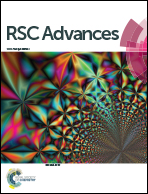Oxidized multiwall carbon nanotube modified separator for high performance lithium–sulfur batteries with high sulfur loading†
Abstract
Recently, researchers have demonstrated that a thin conductive coating on a separator toward the cathode side of lithium–sulfur (Li–S) batteries can improve their electrochemical performance significantly. However, their experimental data are mostly based on cathodes with low sulfur mass loading, while the practical application of Li–S cells requires cathodes with high sulfur loading (≥4 mg cm−2) and high sulfur content (≥70 wt%). Thus, research on the effects of such coatings on Li–S cells with high sulfur loading is essential. Herein, we demonstrate the effectiveness of an oxidized multiwall carbon nanotube (o-MWCNT) coating (0.4 mg cm−2) for improving the electrochemical performance of cathodes with sulfur loading of 5.0 mg cm−2. Due to the physical and chemical trapping of polysulfides, efficient electron conduction and fast ion transport induced by the coating, the fabricated Li–S batteries show dramatically improved specific discharge capacities of up to 925 mA h g−1 (the areal capacity of the cathode is 4.6 mA h cm−2) at a current density of 100 mA g−1 after 50 cycles; they also show good rate performance.


 Please wait while we load your content...
Please wait while we load your content...